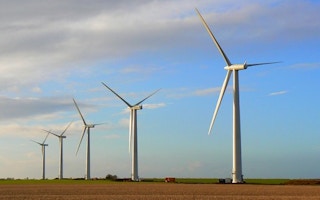It was a rocky path to the announcement of the 2013-14 Budget last month. In the wake of party leadership challenges and the Prime Minister’s housekeeping purge, a bemused media and frustrated public eagerly anticipate the September 14 election.
To continue reading, subscribe to Eco‑Business.
There's something for everyone. We offer a range of subscription plans.
- Access our stories and receive our Insights Weekly newsletter with the free EB Member plan.
- Unlock unlimited access to our content and archive with EB Circle.
- Publish your content with EB Premium.
In contrast to last year’s budget, which featured a range of environmental and sustainability initiatives, 2013 focused on incentives designed to attract private industry investment. In fact, the clean technology sector is keen to garner international support, as Australian investors have been slow to contribute and only on a small scale. In the last few years, venture capitalists and investors from China and Korea have been drawn to the sector’s solid foundation of innovative research and development.
While environmental and sustainability initiatives are yet to reach a scale to justify the important budget priorities of widespread job creation and large-scale industry development, during its term the Labor government has established a stable of positive initiatives which will hopefully survive beyond the next election.
Core Funding
Revenue from the carbon tax has funded a range of energy projects, some of which feature in the Clean Energy Map. These 1,200 projects have been designed to bring businesses, local councils and households together on collaborative projects such as the Renewable Energy Target, solar cities and the carbon farming initiative.
The push for increased investment technology research, development and innovation has been presented as a plan for a clean energy future. The three key initiatives are: the $10 billion Clean Energy Finance Corporation; the $3.2 billion Australian Renewable Energy Agency; and the $200 million Clean Technology Innovation Program. These have contributed to the development of the clean technology sector, which now produces $26 billion in annual revenue and accounts for 25 per cent of the nation’s entire manufacturing sector with a workforce of 53,000.
Greater reliance on renewables
The Renewable Energy Target, committed to 20 per cent of Australia’s electricity production sourced from renewable resources by 2020, was designed to complement the carbon price, accelerate the adoption of renewable energy technology and create behavioural change in businesses and households.
“
Despite the success of the initiatives, the government’s inability throughout its administration to effectively estimate incoming revenue, from sources such as the mineral resources rent tax, has reinforced the assumption they will not be returned to power when the country goes to the polls in September.
The successful adoption of solar energy in the last 12 months amongst businesses and households has led to a reduction of capacity and profits for coal and gas suppliers. An influx of Chinese manufactured cells, plus the rising cost of power prices, has resulted in businesses installing solar systems at triple the rate of last year. Not to mention the fact that photovoltaic cell systems have been reduced in price by almost 60 per cent, while electricity grid costs have increased by 14 per cent in response to the carbon tax.
Global carbon capture initiative
One of the most interesting long-term initiatives launched by the government is an internationally renown institute of 326 members which includes national governments and multinational corporations. In April 2009, the government established the Global Carbon Capture and Storage Institute with a $100 million annual funding commitment over a four-year period. That same year, the institute was incorporated under Australian law as an independent public company. Operating as a not-for-profit entity owned by its members, the institute focuses on reducing global greenhouse gases by building and sharing carbon capture and storage expertise.
Despite the success of the above-mentioned initiatives, the government’s inability throughout its administration to effectively estimate incoming revenue, from sources such as the mineral resources rent tax, has reinforced the assumption they will not be returned to power when the country goes to the polls in September. This has also distracted from the success of initiatives such as the Murray-Darling Basin Plan, which restored some environmental balance to the country’s most productive river system but at a higher cost to taxpayers than was necessary.
Looking ahead
The bottom line is that despite a range of programs, grants and initiatives which have become more readily adopted by businesses and households, the national economy is firmly based on fuels and industries which generate enormous pollution either at home or abroad. Increased demand from a number of rapidly developing trade partners throughout the region will ensure that Australia’s national economy will continue to invest in the exploration, extraction and use of pollution-heavy fossil fuels.
The obvious consequence is a lack of long-term government investment in clean energy alternatives, which are rapidly being funded by international investors. One example is the 75 per cent stake that China’s Guohua Energy Investment Company (one of the world’s largest wind developers) has taken in two of Australia’s largest wind farms in Tasmania.
Mineral and energy schemes with its top trading partners (China, Japan, Korea, Taiwan and the United States), will definitely continue if there is a change in government as Opposition Finance Spokesman Andrew Robb has made it clear that regional bilateral relationships will be a top priority in their first term. One proposed measure, a reduction of the Foreign Investment Review Board threshold, from $248 million to $15 million, would have a significant impact on the development of regional energy projects – both sustainable and non sustainable.
In order to have real impact though, the incoming government will need to address the greatest impediments to foreign investment in the clean tech sector – returns on investment, local understanding of market entry strategies, consistent government policies and the allocation of government funding. With less than 100 days to the election, the sector is keen to see what both parties propose.











